Welcome to our journey through medieval Sighisoara as we discovered it not so long ago. So far we climbed the Clock Tower and visited the house where Vlad the Impaler was born. Let’s explore some more and see what are these medieval horns adorning one of Sighisoara’s oldest houses, as well as climb a medieval staircase to Sighisoara’s hill for more amazing winter scenes and photos.
The City Square, once the center of medieval life
The City Square, within easy reach, is a must-see. All around there are the houses that once belonged to the noblest families of Sighisoara.
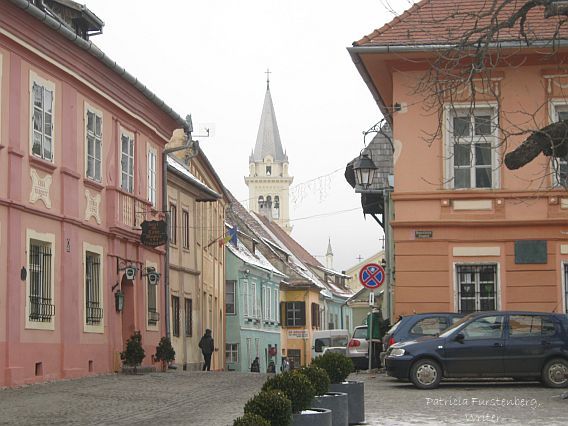
During medieval times, City Square was the place in Sighisoara. Food markets as well as public trials took place here.

Also, the pillar of infamy rose here as well, where public hangings took place. And if you were part of the city’s nobility you could witness the executions seated at your dining table, not mingling with the peasants in the square.
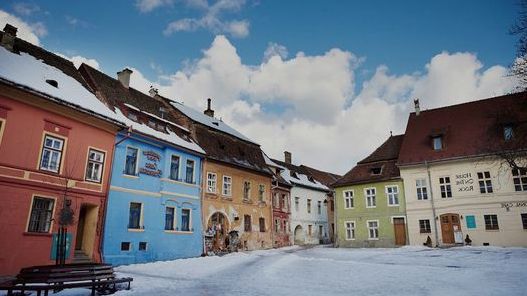
The Stag House
The Stag House showcases an authentic late renaissance – early baroque architecture as well as authentic stag antlers.

The Staircase Way, Strada Scarii, is the way towards the medieval staircase of Sighisoara, for great views and amazing photos
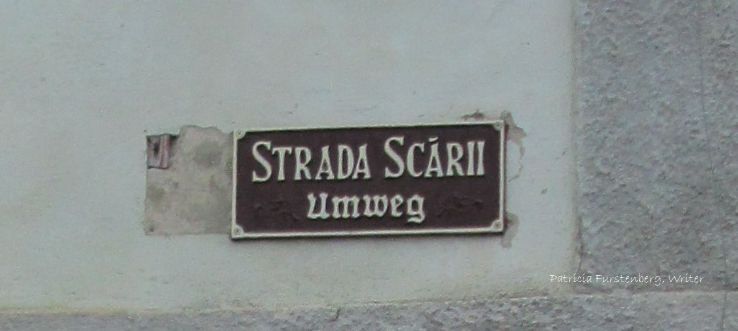
Turn left at the Stag House and you will see a stone-paved street winding towards what looks like a covered entrance. Dare you go in?
The Scholar’s Stairs
The Scholar’s Stairs are 175 covered steps leading to the School on the Hill and the Church Hill. Built during the 17th century, the stairs protected the school-going children during long winters.
“Scara acoperita construita in anul 1642” = the covered stairs, built in 1642:
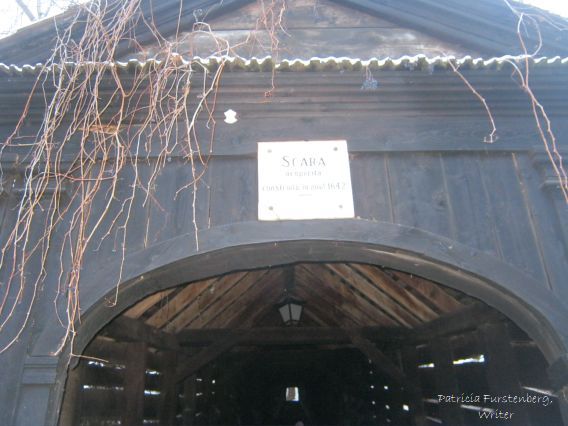
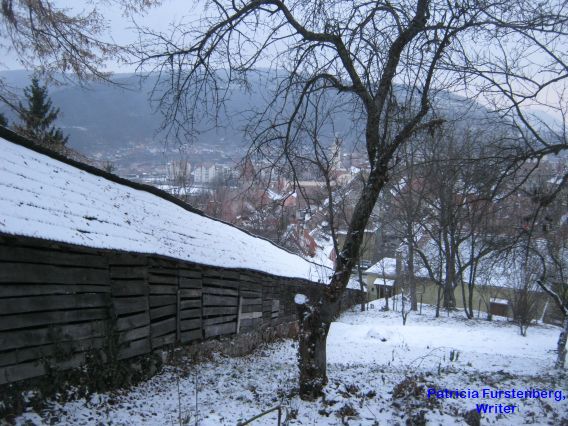

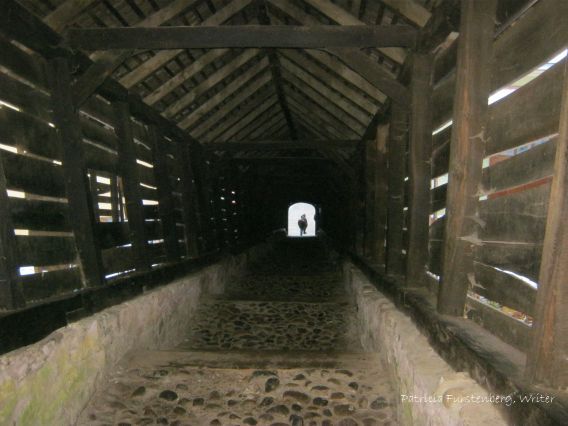
Finalized in 1619, the first and smallest building of the School on the Hill went by the name of New School, Naye Schull. It was only in 1793 when the main school building finally rose.
This medieval staircase of Sighisoara was one of my favorite places to visit and take photos of. I imagine it holds a multitude of stories, spanning centuries.
The Church on the Hill
The Church on the Hill, devoted to Saint Nicholas, is a symbol for Sighisoara’s history, being the most iconic landmark of the town and one of its most valuable architectural building. It ranks third in size between all the Gothic churches in Transylvania, the biggest Gothic church in Transylvania and the whole of Romania being the Black Church in Brasov.
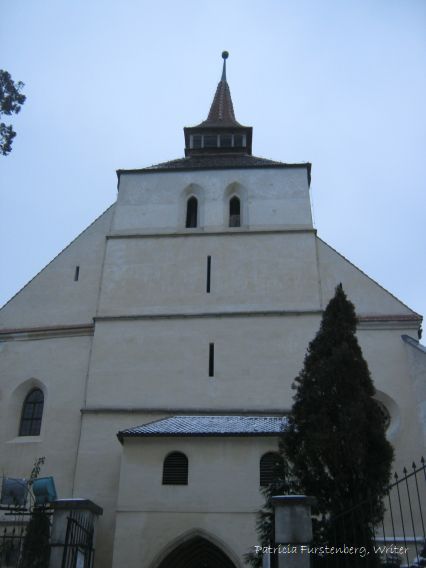
Historians have discovered that the church, built in 1345, was raised on top of a Roman chapel dating back to 1200. Here, on this hill, was the safe place where the people who lived in this area before the Saxons’ arrival would have gathered in case of invasions.

The church’s bell tower would have been the tallest building, most probably used as a sighting spot.

The Church on the Hill as we know it today was first mentioned in 1345 in a letter stating that the people of Sighisoara were loyal to King Ludovic 1st and have built a church dedicated to Saint Nicholas.

Somehow, these statues guarding the church reminded me of Notre Dame of Paris.
Yet the church that first used to stand here was later turned into a crypt.

Behind the Church on the Hill is the Evangelic Cemetery on the Hill.

Here, trees as old as the fortress itself guard the tombstones of some of the first Saxons settlers. Their headstones carry the inscription of their name as well as that of their occupation.
In a secluded area, lined up as for parade, are the graves of a handful of local soldiers.

In their youth, they probably attempted climbing the fortress’ walls or its towers and chased up the School’s stairs in the last minutes before the bell rang. Until the Great War started and they went to fight, to defend their country, not knowing that the last time they will see their native Sighisoara will be from the top of the hill, during their endless sleep.
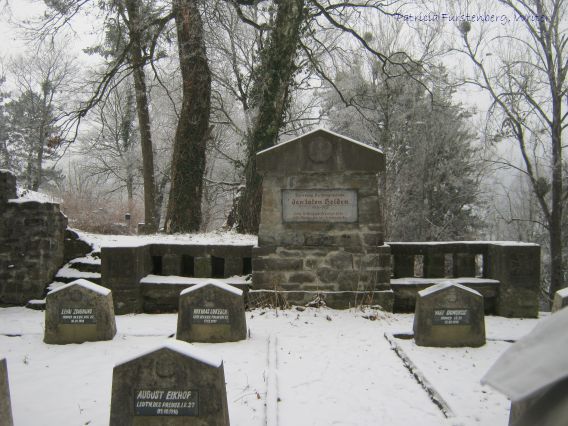
“Den toten Gelded. Jedes Heldengrab ist heilige Erde. Alle storben dass uns Friededn werden” ~ “To the dead soldier. Each hero’s grave is holy ground. They died so that we have peace.”
The Monastery Church
Across the Clock Tower is the 15th-century monastery church with its tombstones, a Gothic-style holly place renowned for its sculpted altar. During the 14th century here was a monastery for Dominican monks and near it a convent for Franciscan nuns.
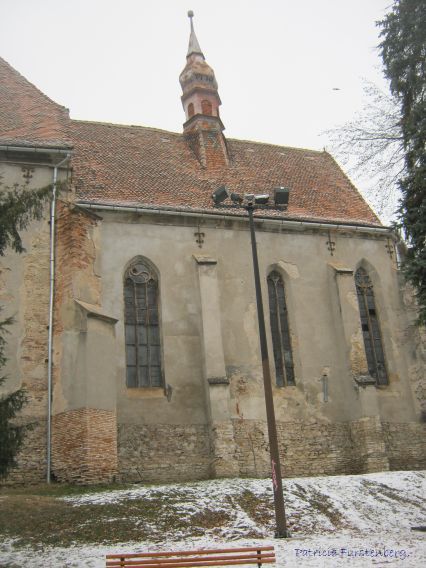
Inside the Monastery Church 35 old oriental carpets were discovered – proof that Sighisoara had economic ties with Persia.

The monastery was first mentioned in 1298 in a document signed by Pope Boniface the 8th. In the place where once the convents stood, now rises a Roman-Catholic church.
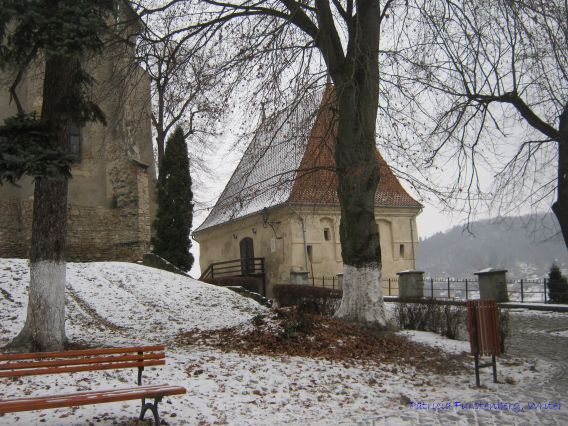
Lower City: Romano-Catholic Church Saint Iosif
This beautiful church was raised at the end of the 19th century in the place of a medieval convent for the Franciscan nuns.
For a true journey through the medieval city of Sighisoara try to attend the Medieval Festival of arts and theater – during August.
More spectacular views of our journey through the medieval city of Sighisoara


Today, over 200 people still live in the medieval citadel of Sighisoara.

And plenty of birds too.
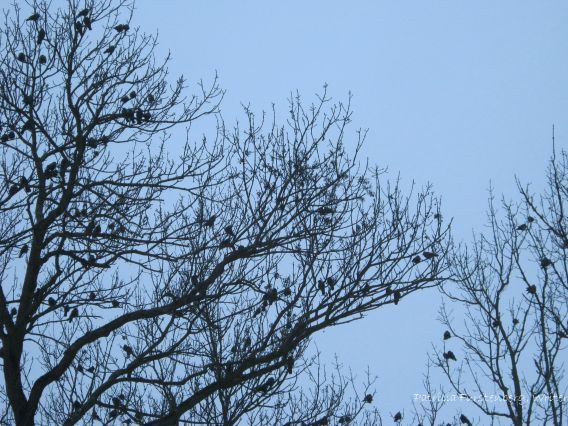
And we also saw a cat with gamboge eyes, in winter:

And an immortal doggy:
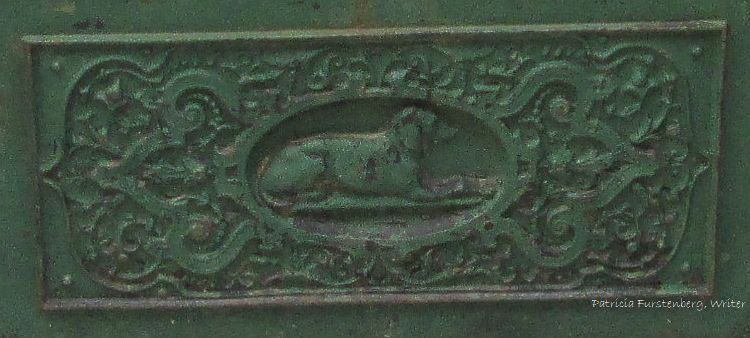
I am sure that, in the midst of winter, this street makes a perfect sleigh slide:
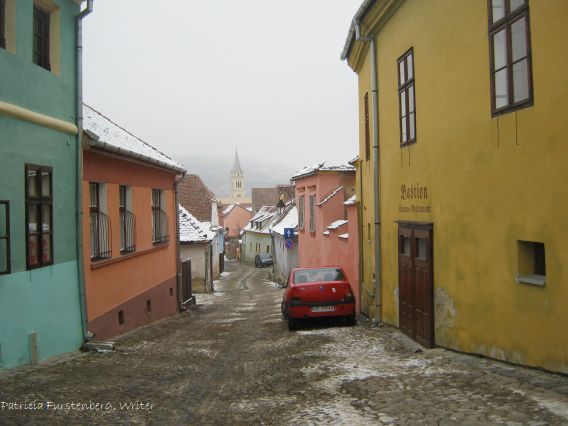
The significance of Sighisoara City
Searching beyond its gray rampant walls shadowed by a tumultuous history, and remembering its Saxon merchants and shepherds, as well as its prominent, Draculesti leaders (Vlad the Impaler and his father before him), a journey through the medieval city of Sighisoara is sure to unravel the fortress’ high status. To this contributed its perfect location, at important crossroads between the roads connecting Moldavia with Wallachia, and Transylvania with Western Europe.
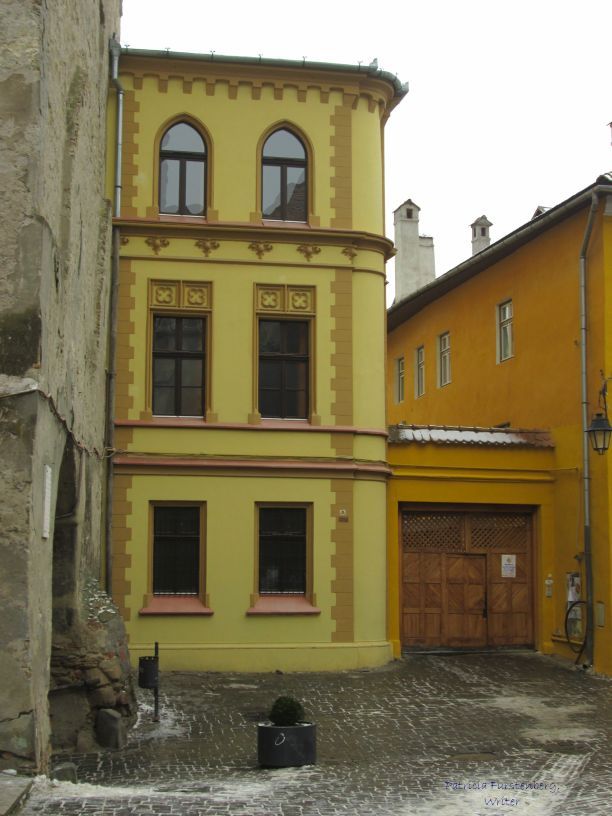
Although they did not leave their mark on the fortress’ walls, during the Late Middle Ages 95 students from Sighisoara went to study abroad, in Viena and Cracovia, spreading the fame of this fortress.
The two evangelic churches, the Monastery Church and the Church on the Hill, also showcase proof of the rich cultural center that Sighisoara became during and after the 16th century. Painters, sculptors, woodworkers, masons, and organ builders arrived here from Salzburg or Tirol to work alongside the local baroque sculptor Elias Nicolai, as local architecture and even gravestones still stand proof.
General Melas of the Austrian army, who defended Napoleon Bonaparte at Marengo was born near Sighisoara.
The Orthodox Cathedral
Located across Tarnava Mare River, in the ew, Lower City, is the Orthodox Cathedral I must include. Look at its perfection, unlike a snowy castle reflected by icy waters, it is a place of emotional warmth and rich traditions.

I hope you enjoyed our journey through the medieval city of Sighisoara, looking at strange horns on buildings, at a dark staircase and snapping some great photos in between. Its history spills into the present in an enchanting way, and this is a place to visit more than once, a town that reveals more secrets with each trip.
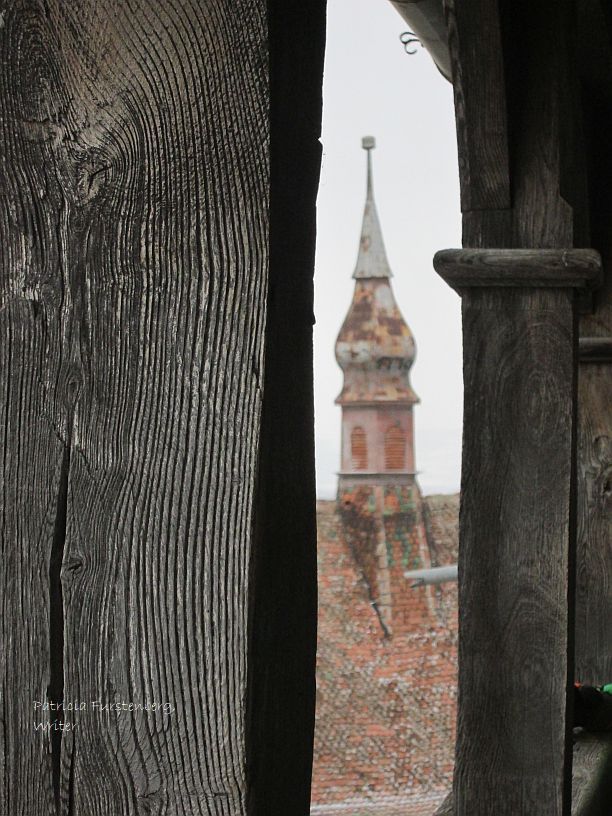
I, for one, can’t wait to go there again.
If you like castles, a medieval staircase or two and photos, although not of Sighisoara, you might like to visit Corvin Castle.
If you like all castles, then visit Peles Castle too.
For more stories and adventures, do check out my books on my Amazon author page.


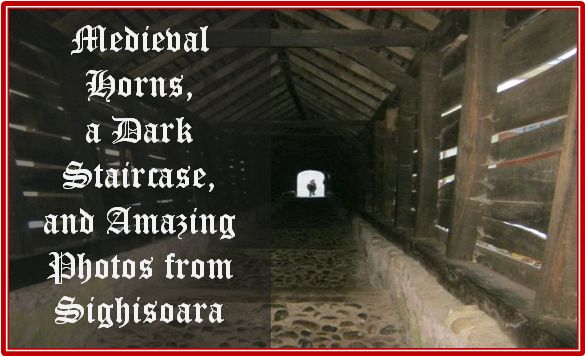
A most interesting post, Patricia. An interesting idea to watch a public hanging during breakfast.
Thank you, Roberta.
Well, this type of breakfast entertainment was common in many European cities during the Medieval era.
Makes you think twice about time-travel, isn’t it. 🙂
I love your photos of this ancient place.
Thank you so much, Molly. I am thrilled to hear that 🙂
A fabulous post Pat…. extraordinary that despite all the world has gone through in the last 500 years or so, this place still stands…amazing history.. xx
Thank you for stopping by, Sally 🙂
We are very lucky indeed. And Romania had seen many battle during its tumultuous past.
Fantastic photographs.
Thank you, Daniel. It was a team effort, “team family” 🙂
Thanks for a fascinating tour, Pat.
My pleasure, Mary. Thank you for stopping by, I do appreciate it 🙂
Fascinating post. I love history and enjoy living it vicariously through blogs like this. Thank you for sharing, Pat.
Thank you for stopping by, Mark.
With greatest pleasure. What joy to read your comment 🙂
Incredible how our affinities change; I never imagined enjoying history this much when I was in junior college 🙂
Pat, it was like stepping back in time as you led us on an international tour of Sighisoara … absolutely fascinating and the international history adds a great sense of intrigue to the place. Wonderful atmospheric photos accompanying your post.
Oh, Annika, thank you!
It is a marvelous place and it gave me great joy to be able to share a glimpse, albeit brief.
I so appreciate your comment 🙂
Have a blessed weekend!
That last photo is fantastic. Thanks for sharing!